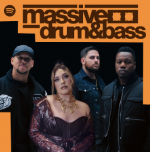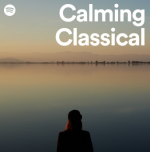EDITORIAL PLAYLISTS
Editorial playlists are curated by Spotify’s in-house editorial team, consisting of music experts and tastemakers.
These playlists serve as a powerful platform for artists to gain visibility and recognition. Being featured on an editorial playlist can expose an artist’s music to a vast and diverse audience, helping them reach new listeners and potentially go viral. The endorsement from Spotify’s editorial team adds credibility and can lead to increased streaming numbers and fanbase growth. These can also be split into a few different types of playlists and this can it can be important to include this into your promotional campaigns.
If you land editorial, you’ll be able to see this by logging into Spotify for Artists. If it doesn’t say “personalised” it’s an editorial playlist. This is a playlist curated by Spotify that remains the same for everyone (though it can change country by country).
PERSONALISED PLAYLISTS
Personalised playlists are algorithmically generated based on a user’s listening history, preferences, and behaviours. Examples include Discover Weekly, which introduces new music, and Release Radar, which features the latest releases from followed artists.
The purpose of personalised playlists is to deepen the connection between artists and their existing fanbase. By leveraging machine learning algorithms, Spotify tailors these playlists to individual users, offering a unique and enjoyable listening experience.
For artists, being included in such playlists can enhance fan engagement, as their music is presented to users who are likely to appreciate similar styles and genres.

To see if you’ve been added to one of these, log into Spotify for Artists, and you’ll be able to see if a playlist is personalised as it will say next to the track title.
Note: These playlists are being increasingly more popular. These can be pitched for via Spotify for Artists.
THIRD-PARTY PLAYLISTS
User-curated playlists/third-party playlists are created by Spotify users themselves, ranging from collaborative playlists to those curated by artists or fans.
These playlists foster community engagement and allow for collaborative projects. Artists can encourage fans to contribute to playlists or curate their own, creating a sense of involvement and shared musical experiences.
Additionally, artists may create playlists to showcase their influences, favourite tracks, or thematic collections, providing fans with a more personal connection to the artist’s musical taste and inspiration.
You’ll be able to see this under the Listener section on Spotify for Artists. These playlists are a fantastic way to gain traction to land on First Party playlists. A lot of these operate use genre verticals, to get inspiration for what playlist to approach have a look at our in-depth resource.











